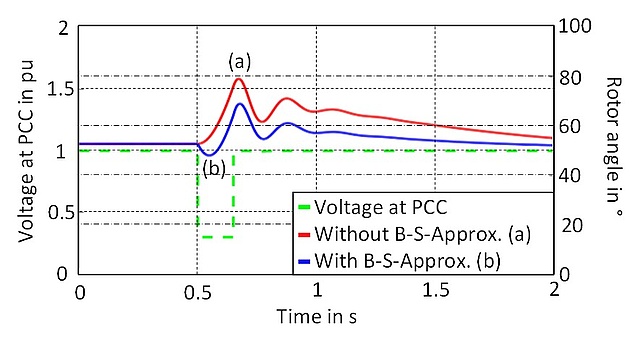Stability investigations have long been an important topic in grid operations and help ensure safe operation of the grid. Stability verification methods are defined in the grid connection conditions and include, among other things, verification of the Fault Ride Through (FRT) capability of power generation equipment, i.e., the ability of the equipment to remain connected to the grid during defined voltage dips without losing its stability. This verification is often done by simulation, and for larger plants (around > 10 MW) this is always the case. For smaller plants, it is the usual procedure especially if it is a project specific designed plant, which is the usual case for hydropower plants for example. In this paper, different methods for investigating FRT capability are analyzed. Two different approaches to generate a voltage dip are reviewed, which significantly affect the FRT and thus also lead to different plant behavior.
On the one hand, the voltage dip is caused by a controlled fault impedance at the grid connection point, and on the other hand, the simulation of a voltage dip is performed by modifying the equivalent voltage source representing the grid. Finally, the article also identifies and analyzes the parameters of the equivalent circuit that have a significant impact on the FRT capability. In the article, special consideration is given to the back-swing effect that occurs mainly in lower-power machines.
 Figure 1: Rotor angle profile without (a) and with (b) consideration of the back-swing effect
Figure 1: Rotor angle profile without (a) and with (b) consideration of the back-swing effect
The article will appear in the journal e & i issue 1/2022.
https://doi.org/10.1007/s00502-022-00998-2